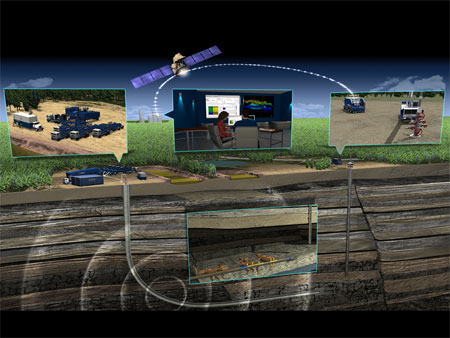Applications of real-time microseismic monitoring -
Intregration of various technologies to improve stimulation treatments
By:
Joel Le Calvez
Schlumberger
Join us for coffee beginning at 10:00 a.m.

Abstract
Predictive models commonly used by reservoir and production engineers to estimate recovery in stimulated wells are based on assumptions that naturally lead to oversimplified fracture geometry. Borehole-based and surface-based real-time hydraulic fracture monitoring using induced microseismicity are well established techniques.
Among other things, these techniques are used to map developing hydraulically-induced fracture networks during stimulation campaigns and allows engineers to calibrate, with improved accuracy, various production models.
Following a basic review of the microseismic monitoring technologies and the need for high-quality geophysics when acquiring and processing data, we highlight the pros and cons of one vs. several monitoring arrays and discuss the notions of sensitivity and vector fidelity as well as accelerometers vs. geophones.
We present the results of a few microseismic monitoring campaigns performed in various environments highlighting the variability of the induced fracture systems to be expected during a stimulation or a re-stimulation program. We document how local stress field can vary along a wellbore trajectory, how perforation strategies can be developed to maximize production or well placement be impacted by microseismic observations.
We also illustrate that it is critical to integrate surface seismic data and microseismic data to detect potential geo-hazards unresolved by surface seismic data. These techniques are also used to confirm interpreted fault geometries and allow on-the-fly changes in fracture stimulation design to maximize the reservoir volume effectively contacted by the stimulation treatment.
Finally we will discuss leading-edge approaches involving downhole, surface microseismic and cross-well data that have been applied to improve our understanding of velocity modeling, anisotropy, attenuation as well as analyze fracture network development and proppant placement.




